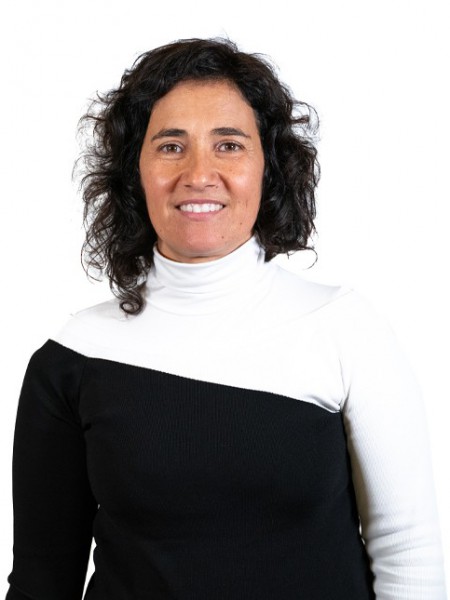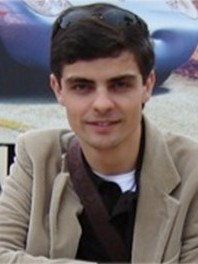abstract
An activated carbon was produced from paper mill sludge (AC-P) and functionalized with thiol groups (AC-MPTMS) for the adsorptive removal of the antibiotic sulfamethoxazole (SMX) from buffered solutions prepared in ultrapure water (pH 8) and real wastewater samples. The physicochemical properties of the two materials (AC-P and AC-MPTMS) showed differences mainly in specific surface area (S-BET), in the type of oxygen functional groups and in the relative percentage of sulphur groups. The adsorption results showed a decrease in the Langmuir adsorption capacity (q(m)) upon an increase on temperature (15, 25 and 35 degrees C), varying between 113 +/- 7 and 42.5 = 0.6 mg g(-1) for AC-P and between 140 +/- 20 and 28.0 +/- 1.5 mg g(-1) for AC-MPTMS. Pseudo-second order model presented the best fit for the kinetic studies, with rate constants (k(2)) increasing with temperature and varying from 0.005 +/- 0.002 to 0.013 +/- 0.004 g mg(-1) min(-1) for AC-P and from 0.006 +/- 0.002 to 0.03 +/- 0.01 g mg(-1) min(-1) for AC-MPTMS. Both adsorbents showed very similar thermodynamic parameters, with the adsorption process being spontaneous (-26 kJ mol(-1) <= Delta G degrees <= -40 kJ mol(-1)), endothermic (69 kJ mol(-1)<= Delta H degrees 78 kJ mol(-1)), and entropically favorable (356 <= Delta S degrees <= 365 J mol(-1) K-1). The performance of AC-MPTMS in the removal of SMX was tested in wastewater, where the material displayed lower SMX adsorption velocity and capacity than in buffered aqueous solution (pH 8) due to competitive matrix effects. (C) 2020 Elsevier B.V. All rights reserved.
keywords
AQUEOUS-SOLUTIONS; REMOVAL; SURFACE; ANTIBIOTICS; PHARMACEUTICALS; ADSORBENTS; PARAMETERS; CONSTANT; ISOTHERM
subject category
Chemistry, Physical; Physics, Atomic, Molecular & Chemical
authors
Jaria, G; Calisto, V; Gil, MV; Ferreira, P; Santos, SM; Otero, M; Esteves, VI
our authors
Groups
G2 - Photonic, Electronic and Magnetic Materials
G6 - Virtual Materials and Artificial Intelligence
Projects
CICECO - Aveiro Institute of Materials (UIDB/50011/2020)
CICECO - Aveiro Institute of Materials (UIDP/50011/2020)
Projeto de Investigação Exploratória: Paula Ferreira (IF_Paula Ferreira)
eDYE - Engineering Dyes for Dye-Sensitized Solar Cells (IF/00973/2014)
acknowledgements
Thanks are due to FCT/MCTES for the financial support to CESAM (UIDP/50017/2020+ UIDB/50017/2020) and CICECO-Aveiro Institute of Materials, (UIDB/50011/2020 & UIDP/50011/2020), through national funds. Guilaine Jaria thanks her PhD grant (SFRH/BD/138388/2018) supported by national funds and FSE through Fundacao para a Ciencia e a Tecnologia (FCT), POCH (Programa Operacional Capital Humano) and European Union. Marta Otero, Paula Ferreira and Sergio Santos thank FCT for the Investigator Program (IF/00314/2015, IF/00300/2015 and IF/00973/2014, respectively). Vania Calisto is thankful to FCT for Scientific Employment Stimulus (CEECIND/00007/2017). Maria V. Gil acknowledges support from a Ramon y Cajal grant (RYC-2017-21937) by the Spanish Government, co-financed by the European Social Fund (ESF). The authors thank to the project RemPharm (PTDC/AAG-TEC/1762/2014) funded by FCT, I.P., through national funds, and the co-funding by the FEDER, within the PT2020 Partnership Agreement and Compete 2020. Milton Fontes and workers of Aveiro's WWTP (Aguas do Centro Litoral) are gratefully acknowledged for assistance on the effluent sampling campaigns.



